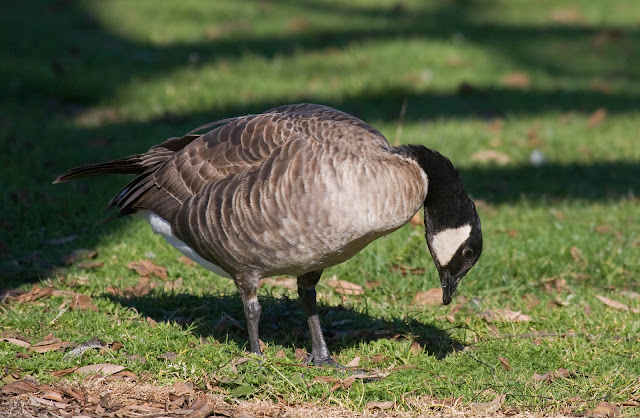Drought at Great Salt Lake, Utah, and extra rain and flooding to the northwest in Harney basin of SE Oregon in the 1980's, evidently led to many birds permanently relocating to Oregon. Thus, in subsequent years I could see hundreds of birds at a time at Malheur refuge (800 birds between P Ranch and Benson Pond on May 21, 1990; 700 birds on Diamond Road on May 27, 1994; 950 birds on Hotchkiss Lane on May 28, 2013).
Because they were rare when and where I first started birding, I still am excited whenever I encounter these birds here in the San Diego region, where they are regular. Their long dull pink legs and long curved bills and maroon plumage with glossy pink, purple, and green highlights lend an air of a rare tropical visitor.
This is a long-winded way to say that I am presenting this recent photo below of 3 birds at Kit Carson Park in Escondido, even though the photo is not exceptional.
 |
| White-faced Ibis. March 7, 2018. Escondido, California. |









